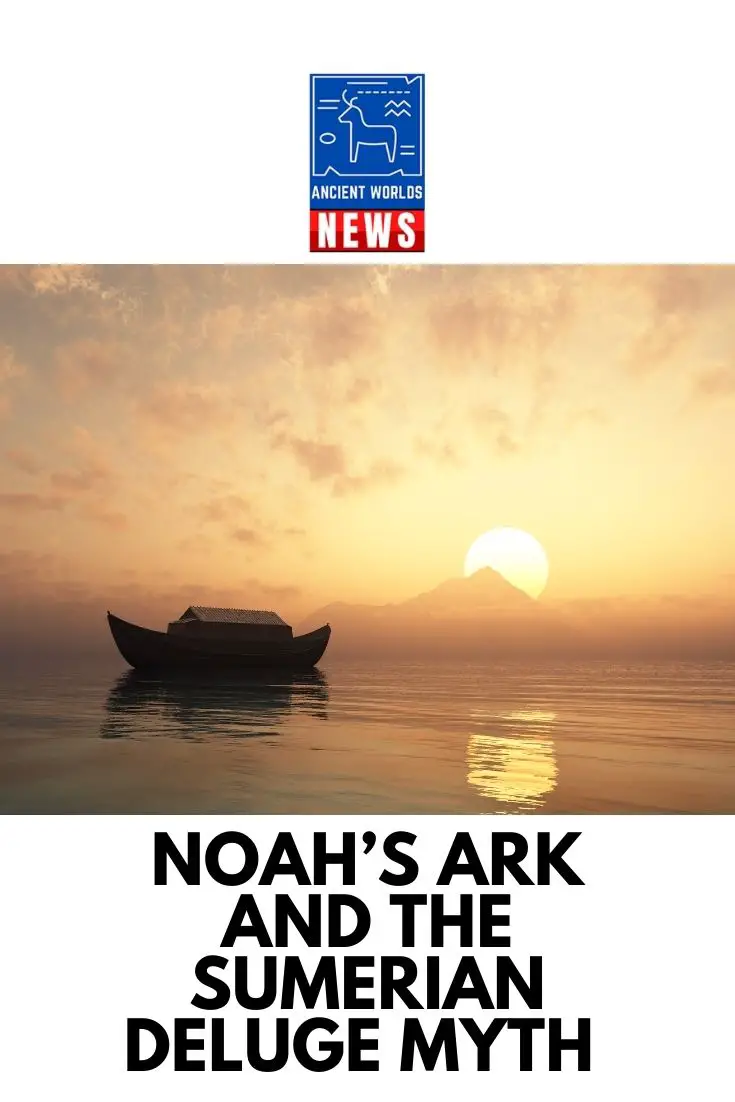The story of Noah in the Bible shares many similarities with the story of Atrahasis in the Sumerian religion. First, the circumstances under which God instructs each protagonist to build the ark are the same. What follows is also the same; they are joined by their families and representatives of all animals.
Noah’s Ark
The ark in the Bible is a huge boat that Noah was instructed by God to build. Its purpose was to provide shelter to Noah, his wife, their three sons, and a pair of every type of creature – male and female.

Human beings had become wicked, and God was very angry with their behavior. In addition to mankind, he decided to destroy birds, animals, and creeping creatures.
One man, Noah, was righteous, and God favored him. Noah was the father of three sons – Japheth, Ham, and Shem. God made a covenant with Noah; after the ark was complete, Noah, his wife, and their sons were to go inside so they would not succumb to the floods.
God told Noah that he was going to destroy everything because there was too much wickedness in the world. The ark was to be made of gopherwood, and it would have several rooms, three and decks, and a door. Noah would also cover the inside with pitch. He did everything that God asked him to do.
After Noah had finished construction of the ark, God asked him to take seven pairs of clean animals, male and female, seven pairs of birds, also male and female, and a pair of unclean animals to ensure that they continued existing even after the floods.
Noah, his wife and sons, and a pair of each animal, male and female, then entered the ark per God’s instructions, and after that, God shut the door.
Then all the fountains and windows of heaven opened. The rain went on for 40 days and 40 nights. The water rose to the level of every hill on earth. All living things outside the ark died.
For one hundred and fifty days, the earth was flooded with water. Then the water drained, and the ark stopped on top of Mount Ararat.
Noah first sent a raven and then a dove outside to check whether the ground was dry. The dove came back since it had not found anywhere to perch. After seven more days, Noah sent it out again, and this time, it returned with a fresh olive leaf. Noah realized that the water was drying up.
God then told Noah and the animals to leave the ark so they could reproduce and fill the earth. After that, Noah constructed an altar on which he could make sacrifices to God, and God promised to never again flood the earth.
The Sumerian Deluge
The complete version of the Sumerian deluge is found in the Epic of Atrahasis. The story is also found in the Epic of Gilgamesh. According to the story, before man existed, the gods lived on earth, and the less powerful gods had been given the responsibility of maintaining the land and temples, and to grow food. However, the lesser gods felt like they were being taken for granted, so they rebelled. The supreme triad took mercy on them and asked the mother goddess to create human beings to help with the work. Human beings were then made from clay.
Since the young god Geshtu-E was given as a sacrifice, his blood was mixed with the clay to make the human soul immortal. Geshtu-E had been a leader of the gods who had rebelled, so the first humans carried Geshtu-E’s deceitful characteristics. As the human population grew, the gods regretted their decision. The amount of noise that human beings made prevented the gods from sleeping.
Enlil tried to reduce their population using drought and famine, but none of it worked, so he decided to destroy humanity with floods.
All the gods swore not to tell anyone about Enlil’s plan, but Enki told one of his disciples, Atrahasis. Enki told Atrahasis to build a boat so that he, his family, and representatives of all the animals would stay safe until the deluge was over.
The deluge lasted seven days. When the floods ended, the boat rested on Mount Nimush. Atrahasis first sent a dove to see if the floods were over. He then sent a swallow. When he was sure that it was safe, he went outside with his family and the animals.
The gods then realized how rash their decision had been. The absence of human beings meant that there was no one to produce food, so the gods started to starve. When Atrahasis gave offerings to them, they were so happy that they blessed him with immortality and settled in a remote place away from human beings.
Enlil was disappointed with Enki for failing to keep his secret but acknowledged that Enki had been wise. The gods then created other human beings; women were to suffer from complications like infant mortality and stillbirth to prevent human beings from becoming too many. Other women were forced to become nuns to prevent them from engaging in sexual intercourse. An angel of death, who would reduce the human lifespan, also emerged.
Similarities
In both stories, Noah and Atrahasis were approached by a supreme being and asked to build a boat that was to be used as shelter during the floods. In the Bible, Noah was chosen by God because he was righteous. In the Sumerian religion, Enki approached Atrahasis because Atrahasis had been faithful to him.
Noah and Atrahasis were instructed to shelter inside the ark with their families and representatives of all animals in both stories.
“Seven days” is also significant in each story. In the Bible, the floods started after seven days, and in the Sumerian religion, the floods lasted seven days.
In both stories, the arks ended up on top of a mountain. In the Bible, the ark was on the top of Mount Ararat, while in the Sumerian religion, it was on Mount Nimush.
Birds were also employed by each protagonist to see if it was safe enough for them to leave the ark. Both men used doves.
Summary
Many of the details of the Sumerian deluge myth and those of the great floods in the Bible are quite similar as indicated in the section above. The relationship between mankind and the gods were also similar. In the Bible, God decided to wipe out mankind because they were wicked; in the Sumerian deluge myth, the first humans carried Geshtu-E’s rebellious blood and disturbed the gods, and so the gods decided to destroy them in a flood as well. However, in each story, one man and his family are saved because they were righteous and faithful. These two stories convey that wickedness will be punished, and that righteousness and devotion are the qualities that the gods desire in human beings.

